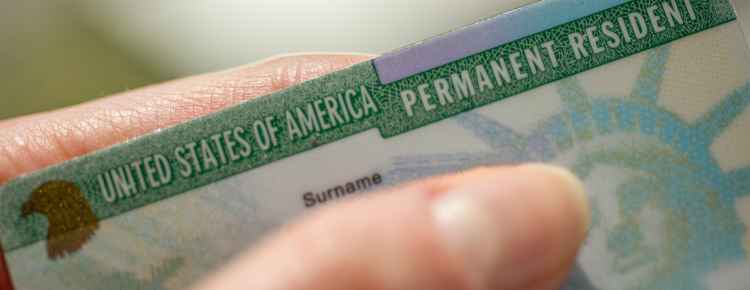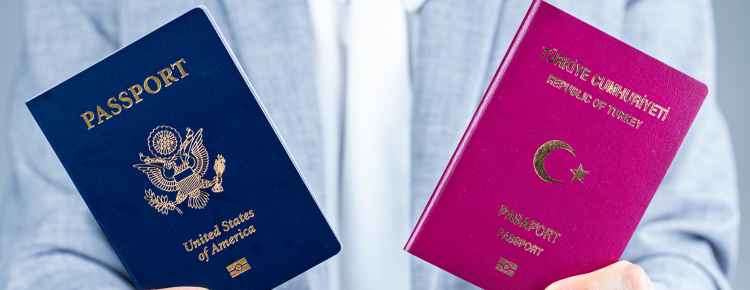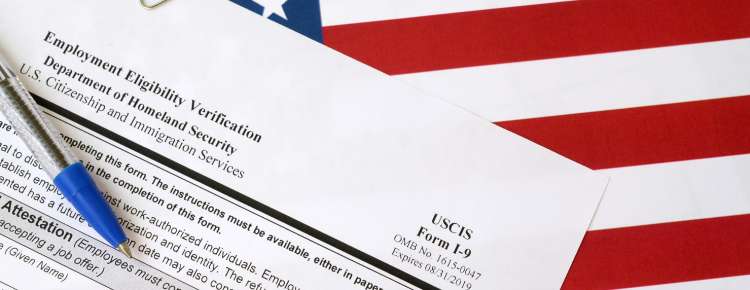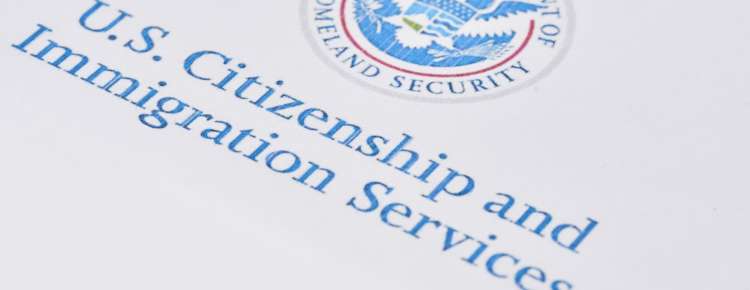The I-94 arrival-departure record, officially known as the Form I-94 arrival-departure record, is a document (paper or electronic) issued by U.S. Customs and Border Protection (CBP) officers to foreign visitors upon their entry into the United States.
I-94 records the arrival dates and departure dates of travelers visiting the United States.
A Customs and Border Protection CBP officer attaches this Form I-94 to the passport of nonimmigrant visitors upon their entry to the United States.
The visitors must exit the United States prior to the departure date stamped on Form I 94. This date is the Admit Until Date on the electronic Form I-94.
The Form I-94 number is also known as the Departure Number or Admission Record Number.
The I-94 arrival departure record is crucial for various immigration relates matters it is a vital document for many immigration purposes.
NOTE: Foreign nationals visiting the U.S. through the visa waiver Program do not get Form I-94. They are issued Form I-94W (Nonimmigrant Visa Waiver Arrival/Departure Record)
What Is The I-94 Travel Record Form?
This document referred to as the I-94 arrival departure record, is utilized to monitor the entry and exit of non-U.S. citizens into and out of the United States.
It serves as proof of lawful entry and departure dates from the country.
I-94 is a very important document. once a foreign visitor enters U.S. dates on the visa does not define the duration how long the traveler is allowed to stay in the U.S. it is decided by I-94.
Foreign visitors to the United States no longer need to complete paper Customs and Border Protection Form I-94 to prove their legal-visitor status to
- Employers
- Schools/Universities
- Government agencies
They can access their CBP arrival departure record information online
CBP gathers travelers arrival departure information automatically from their electronic travel records
Who Needs An I-94 Form

Form I 94 is issued by the Department of homeland Security (DHS) to aliens who are:
- Admitted to the United States
- Adjusting Status while in the United States
- Extending their Stay
Everyone entering the United States needs an I-94 except:
- American citizens
- Returning resident aliens (SB-1 visa holders)
- Non-U.S. citizens with immigrant visas
- Most canadian citizens visiting or in transit
It is issued automatically to most non-U.S. citizens who are not permanent residents upon their entry arrival in the United States. exceptions include:
- Individuals entering under the visa waiver program,
- Those using border crossing cards,
- Participants in the compact of free association,
- Certain airline crew members, and
- Those utilizing automatic visa revalidation when briefly visiting neighboring countries (Mexico, Canada, or the Caribbean)
What Does Form I 94 Look Like?
The I-94 arrival-departure record is critical in knowing the extent of an authorized stay in the U.S. and staying in status. The highlighted text contains the following fields as below and are commonly needed when applying for certain immigration benefits:
- Admission Record Number: This is an 11-character alphanumeric number also known as departure number, I-94 number, and admission record number, It provides a unique number for each entry.
- Most Recent Date of Entry: This date reflects the exact date you entered the U.S.
- Class of Admission: This code represents your category of nonimmigrant status.
- For example, for leisure it indicates B-2,
- For students it indicates F-1
- Admit Until Date: This indicates the day when your immigration status expires in the United States. Visitors must exit the United States on or before this date.
- This date is D/S or Duration of Status for students and other exchange visitors
How Do I Get An I-94 Card?
Upon your arrival in the U.S., you need to show your passport and visa to a CBP agent, who then enters your information into an electronic tracking system and stamps your passport indicating your lawful entry into the U.S.
Electronic I-94 Record
The I-94 arrival departure record was previously issued in a paper document until 2013. Nowadays, most travelers arriving by air or sea receive electronic I-94 records, while those entering the U.S. by land might still be given a paper version.
As of April 30, 2013, most arrival and departure records are created electronically upon arrival.
Paper I-94 Record
- Before May 2013 all foreign visitors to the U.S. were issued a paper I-94,
- Electronic I-94 arrival departure records are only issued at air and sea ports of entry.
- Paper form I 94 is still issued at the land border port of entry
- CBP continues to issue paper Form-I 94 to certain classes of aliens such as refugees, certain asylees, and parolees
How To Apply For Or See Your Current Form I-94?

To apply or see your current form I 94 arrival departure record download the:
- CBP One App on your tablet or cell phone
- Visit the official Form I-94 CBP Website
By downloading or visiting the website:
- You can request an I-94 if you are traveling by land
- You can apply for an I-94 as well as pay the fees in advance, saving time at the land border port of entry
- If traveling by air or sea you receive an I-94 at the port of entry during the admission process
- You can see and print your most recent Form I 94 arrival departure records to keep a record of your legal visitor status to the U.S.
- You can have a digital version of your I-94 on your phone using the CBP One App
- You can read frequently asked questions (FAQ) about the I-94
- You can find out the duration you are legally allowed to stay in the United States
- You can get the history (for the last 10 years ) of your arrival and departure records (from the U.S.)
Note: The travel history tool is to assist you it is not an official record for legal purposes.
How Much Does The I-94 Form Cost?
There is no fee for Form I 94, The government issues the form at no cost. whether you arrive by land, air, or sea or whether you get a paper or electronic record the government provides you the form at no cost
On the other hand, if you are arriving at a land border port of entry, and you want to apply online for a provisional I-94 one week or less before your arrival, then it will cost you $6 for the provisional I-94.
This can streamline and speed up your arrival process and reduce the amount of time you have to spend waiting in line at the border.
What Can I Do If The CBP Site Doesn’t Find My Record?
If the CBP site doesn’t find your I-94 record telephone or visit a CBP deferred inspection office in person and explain your problem. share your flight information with CBP. some offices have resolved the problem over the phone others require an in-person visit.
I-94W For Travelers, Traveling Under The Visa Waiver Program
To apply for their I-94W in advance through the CBP One App or the Form I 94 web page, citizens of visa waiver program countries must have approved and current authorization through the Electronic System for Travel Authorization (ESTA)
Fixing An Incorrect Form I 94
Both Customs and Border Protection (CBP ) and U.S. Citizenship and immigration services (USCIS) may issue a Form I 94. If there is an incorrect record in your I-94 you’ll need to correct it.
Correct An I-94 Issued By CBP
If CBP issued you an incorrect I-94 having incorrect information like a misspelled name or incorrect entry dates
You need to visit the CBP deferred Inspection Office inside the airport and request a correction
Correct An I-94 Issued By U.S. Citizenship And Immigration Services
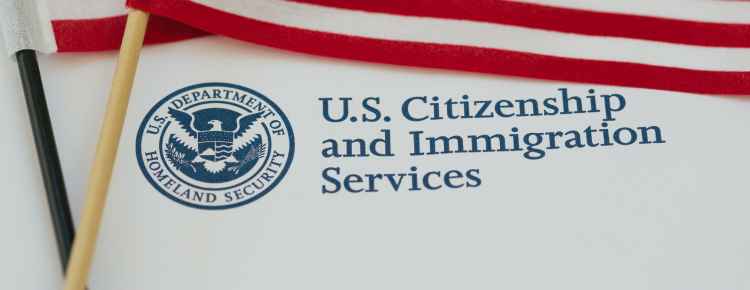
As part of granting foreign nationals an extension of stay or change of status if your Form I 94 was issued by USCIS
- You need to file Form I-102 (Application for Replacement/Initial Nonimmigrant Arrival-Departure Document)
- Pay filing fee
- Supporting documents providing proof of correct information
- A signed statement explaining specific incorrect information on the I-94 record
- Evidence verifying the validity of the information submitted for correction
- Submit the original incorrect I-94 with the I-102 application
USCIS will correct the I-94 incorrect record at no cost if the mistake was due to USCIS. You will have to make a request through an infopass appointment at your local USCIS office.
Schedule an appointment, Take your originals, and explain to them why you think there is a mistake on your I-94 card, I-94 electronic record, or Passport admission stamp.
However, you need to file Form-102 with a fee if you are unable to prove that the mistake was made by USCIS.
Replacing An I-94 Arrival Departure Record
If your I-94 Form is destroyed, lost, stolen, or mutilated you can replace it.
- Replacing an electronic form I 94 is an easy and simple process
- Replacing your paper records takes time and requires a filing fee
Replace An Electronic Travel Record
Replacing an electronic I-94 is easy and can be obtained by going to the CBP I-94 website. The process is as follows:
- Go to the CBP I-94 website
- Enter necessary information
- Look up your I-94 Form
- Print it when submitting it with the USCIS application
Replace A Paper Travel Record
A paper-based version of Form I 94 is labeled as Form I-94A
Replacing it involves:
- Filing Form I-102 with USCIS along with
- A $445 filing fee, and
- Supporting documents
Frequently Asked Questions
Is Form I 94 A Visa?
No, I-94 is not a visa. though both documents are closely related, Form I-94 is different from a visa. in terms that it is a controlling document.
Visa does not define for how long you are allowed to stay in the U.S.
- Visa is an entry document and must be valid when seeking admission into the U.S.
- I-94 is a status document describing the foreign nationals visa or parole status and the length of permitted stay.
Is Form-94 Needed To Adjust Status To Permanent Resident Status?
Form I 94 arrival departure record is a critical piece of evidence that can be submitted with most adjustments of status packages. It mostly satisfies the requirement to prove both
- A lawful status
- A lawful entry



